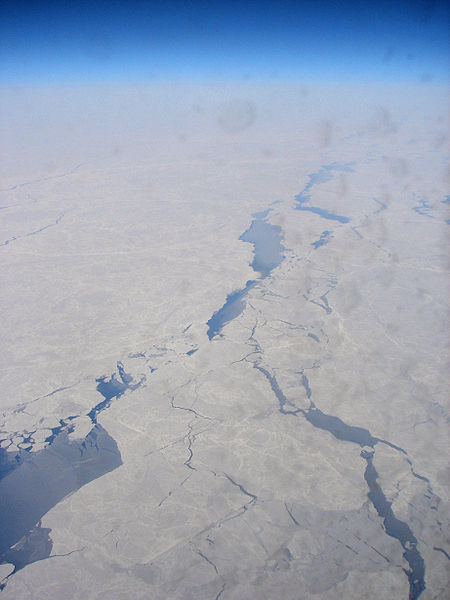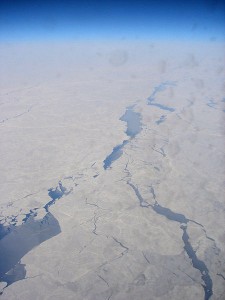
Drilling in the Arctic
Royal Dutch Shell is set to kick off the beginning of oil exploration on one the world’s last great frontiers. With Arctic sea ice melting, new opportunities are opening up for oil, gas, and mineral exploration. There is an estimated 89 billion barrels of oil and gas in the Arctic Ocean, one third of which lies off the coast of Alaska.
There is irony in the new Arctic oil bonanza. It is the burning of oil and gas that contributes to climate change, which is melting sea ice, opening up more oil and gas – ultimately exacerbating climate change. As The Economist noted in its special report on the Arctic this week, the effects of melting sea ice will significantly alter the Earth’s climate:
“It is hard to exaggerate how dramatic this is. Perhaps not since the felling of America’s vast forests in the 19th Century, or possibly since the razing of China’s and western Europe’s great forests a thousand years before that, has the world seen such a spectacular environmental change.”
But no matter; the enthusiasm is palpable. Industry leaders, politicians, and commentators are eager to see the resources extracted.
Alaska stands to greatly benefit from the flurry of activity, a state that gets 90% of its tax revenue from oil production. If oil can be successfully extracted from the Chukchi and Beaufort Seas, it will compensate for declining oil production from Alaska’s maturing oil fields (see figure).
Source: EIA
Of particular concern for Alaskan officials is the smooth operation of the Trans-Alaska Pipeline. As oil production has declined over time, oil transported through the pipeline has declined. This creates a problem for the integrity of the pipeline: if the volume of oil flowing through the pipeline slows too much, water may separate from the oil and freeze, damaging the pipeline.
As a result, Alyeska Pipeline Service Co., the pipeline’s operator, estimates that the pipeline cannot operate below 350,000 barrels per day. The pipeline transported 570,000 barrels per day in the month of May, down 7.2% from a year earlier. Therefore, eyeing a big pay off, Alaskan officials are chomping at the bit to exploit the bounty offshore.
Despite the enthusiasm, offshore Arctic drilling is beset with risk. Harsh storms, sea ice and a lack of infrastructure add significant difficulties on top of what already is an inherently risky operation.
Moreover, regulators, environmentalists, and coastal communities are concerned that the industry will not be equipped to effectively respond to a catastrophic blowout. For this reason, drilling activity is restricted to summer months, to avoid sea ice. Shell has worked for several years to convince stakeholders that it is up to the task, developing elaborate plans to beef up safety and oil spill response.
Either way, Shell is moving forward. After it receives its last permit from the Department of Interior, Shell can begin drilling within weeks.







[…] Drilling in the Arctic […]